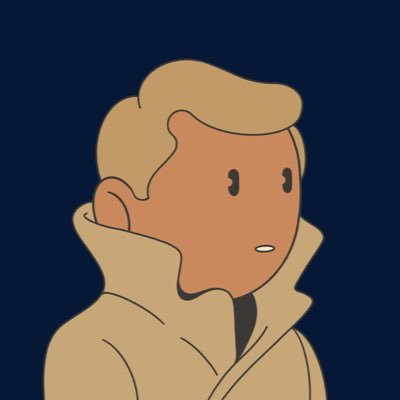About haydenclay

Hayden is a visual artist currently living in Maryland. He uses 3D art to explore a variety of surreal ideas, with a particular interest in blurring the line between dreams and reality. His work often draws from natural elements, such as water, clouds, and grass, in order to create dreamlike environments that feel both familiar and otherworldly.
His work has been exhibited internationally in Belgium, Beijing, Spain, Paris, and more. His largest show to date, "Nowhere Now Here" took place in Seoul, Korea, where audiences enjoyed an innovative mixture of physical and digital artworks.
Hayden is known for such series as World Underwater, Swimwear, Strange Clouds, and The Suburbs
An interview with haydenclay led by Carlo Borloni


1. Your practice often blurs the line between dreams and reality through surreal, immersive landscapes. How does The Suburbs fit into this broader artistic vision? In what ways does suburban life become material for imaginative transformation?
I've been working as an artist across mediums for a bit over 10 years now. Despite changes in medium, subject, and series, my artistic vision has remained the same. I'm fascinated with dreams, and my favorite thing about dreams is that they're believable. When you're having one, you don't really question it. You accept it as reality.
As an artist, I try to create something similar: something surreal and weird but also believable, if just for a minute. I think fiction is at its most interesting when it's based in reality, so that's how I approach surrealism as well. Suburban life is perfect for this, as most people are familiar with and have memories associated with it. It's sort of this raw emotional building block that I can alter and build into fascinating visual stories. I feel like people agree that the suburbs are pretty strange, so they're already halfway ready to accept my surreal twists on it


2. You’ve mentioned that it wasn’t until you left the suburbs that you realized how strange they are. Could you speak about this shift in perception? What role does distance, emotional or geographical, play in shaping the narrative of this series?
After living in the suburbs for most of my life, I moved to New York City. This unlocked many perspective shifts for me. Firstly, it gave me an immense appreciation for grass, which is very noticeable in my work. I visited my parents after a few years away and nearly melted at the smell of fresh cut grass. Secondly, this distance recontextualized suburban life. The way neighbors interact, the lawns they protect, the boundaries they put up. To an alien, suburban humans must look like a completely different species than city humans. As the city became more and more familiar to me, these differences became more interesting. So in the Spring of 2023, I decided to explore them.


3. Each artwork in The Suburbs evokes a specific story or emotion. How do you balance narrative and ambiguity in your work? Do you feel that too much clarity might compromise the poetic quality of the image?
The spectrum of narrative clarity goes from abstract nonsense to being hit over the head with a brick. A good artwork goes somewhere in the middle. It's a balancing act, because you want something that the viewer can relate to, but also something open-ended. If everyone gets a different message from my artwork, I think that's wonderful. Too much clarity, or too cliche of a message, can definitely degrade an artwork


4. Your visual language often includes natural elements, water, clouds, grass, that create a dreamlike atmosphere. How does this organic softness contrast with the artificiality of suburban settings in The Suburbs? What tension does this generate?
The Suburbs are strangely perfect. Nature is only allowed to exist under strict, organized parameters. Nothing is overgrown. There is a beauty to this, but there is also a sterility. There is peace, but also uncomfortable silence.


5. Your practice spans digital and physical formats, and in Nowhere Now Here, you explored immersive exhibition models. How did that experience influence your approach to The Suburbs and your broader way of presenting artworks?
The Seoul exhibition was a fantastic experience. My work was displayed in a variety of formats, from backlit canvases to framed prints and digital screens. Many artworks were massive, printed around 8ft tall. The artworks were also displayed in bespoke rooms that were made to complement the artworks. The Suburbs sat in a soft, gentle room with lush pink carpet, complementing the pastel colors of the houses. World Underwater artworks were displayed backlit in a dim room, where rippling light patterns were projected on the floor to emulate water.
This experience made me very excited for the future of displaying my art. I think we should do more shows that design the space around the artworks. I would love to do a Suburbs exhibit in a gallery space with fresh sod replacing the floor.


6. You’ve exhibited internationally, from Asia to Europe. Do you think the American suburbs take on a different meaning when seen through the lens of a non-American audience? Have any particular reactions stood out to you?
I think so. From Americans, I get more personal comments about how artworks remind them of very specific memories. I'm often told that my artworks look exactly like a dream someone had. I love these comments.


7. Childhood, with its emotions, rituals, and spatial memories, seems to be a recurring undercurrent in your work. The Suburbs appears to touch on both nostalgia and unease, how autobiographical is this project for you?
It's very autobiographical. Many artworks draw directly on my own personal experiences. 'Best Friends' was inspired by my own best friend, as his house was directly in front of mine. However, many artworks have nothing to do with me. Some artworks are absurd; some are purely comical. Many artworks are about universal feelings and experiences, like childhood nostalgia.


8. Working in 3D allows you to construct highly detailed, almost cinematic environments. Do you see yourself more as a world-builder or a storyteller? And how would you describe your relationship with the viewer?
Both, but I see myself as more of a world-builder. I often feel like a film director, where I'm creating different scenes within the same cinematic universe. Different series exist in different worlds with different rules.
I like to imagine I exist in this strange world with a camera, and I'm walking around taking pictures of it. When I'm out walking, I imagine what I wish I could see and photograph with this mental camera.


9. Your previous series, World Underwater, Swimwear, Strange Clouds, often explored escapism, dislocation, and fluidity. The Suburbs seems more grounded in everyday life. Would you consider this a change of direction or a continuation of the same journey?
I actually think all these series are grounded in everyday life. World Underwater, for example, portrayed common locations with floods. It was meant to be relatable and familiar to the viewer. I agree that The Suburbs is more grounded, but it's also exploring a new direction. I wanted to create a larger series with a more flushed out world. Swimwear only consists of seven artworks. The Suburbs is already at twenty-six artworks and growing.
I desire larger, narrative worlds. I feel like I'm being drawn to making video games and movies to explore even larger worlds.


10. If you had to summarize The Suburbs with a single recurring image or emotion, what would it be? And what do you hope remains with the viewer after they’ve entered, and exited, this suspended suburban world?
The very first image in the series, 'Memory Lane', captures the series very well. It's pleasant and perfect, but also ominous. It's nostalgic, but disconcerting. It's infinite, as the suburbs go on forever and ever. To a viewer of this world, I simply hope they feel something powerful: be it a childhood memory, a wave of nostalgia, or maybe even something primal.

Sign up for our newsletter to keep up with the latest news from NINFA
Sign up for our newsletter to keep up with the latest news from NINFA
Write us at: info@ninfa.io, or click here if you need support
Copyright © 2025 Ninfa Labs - 12094240962 - All rights reserved

